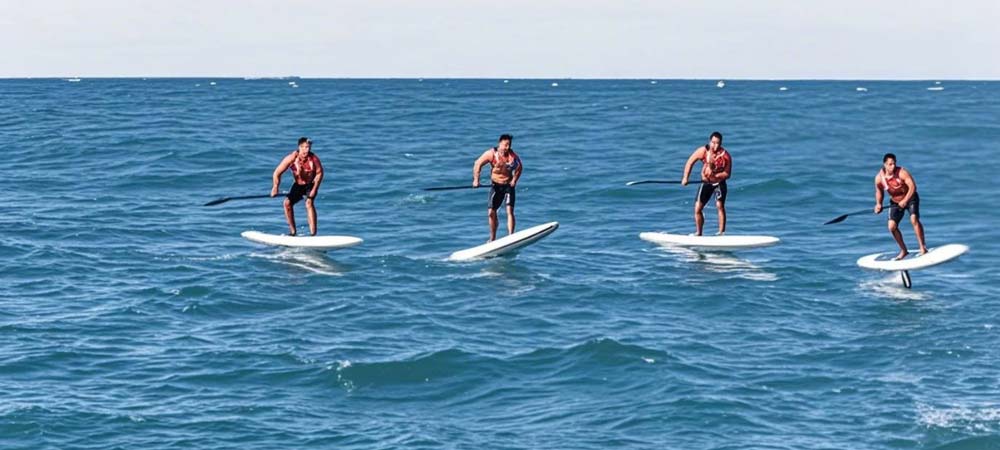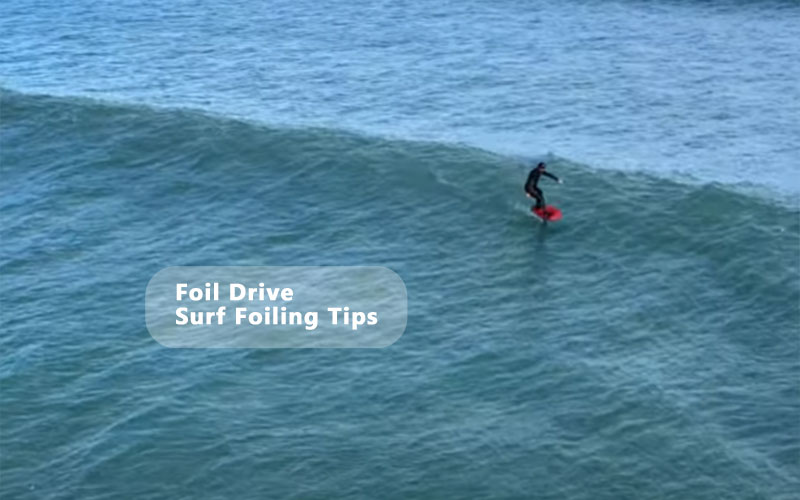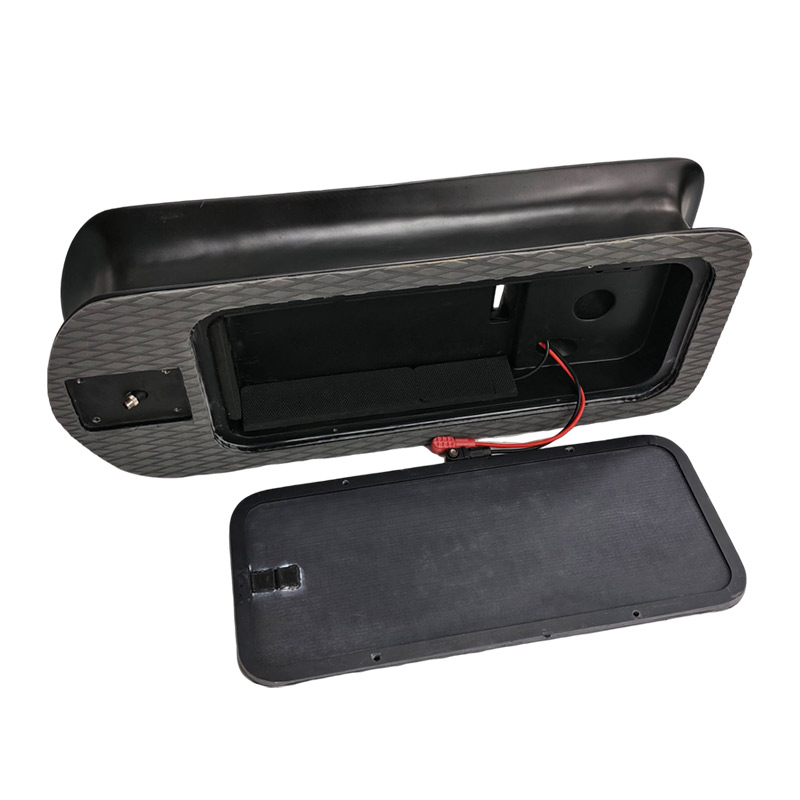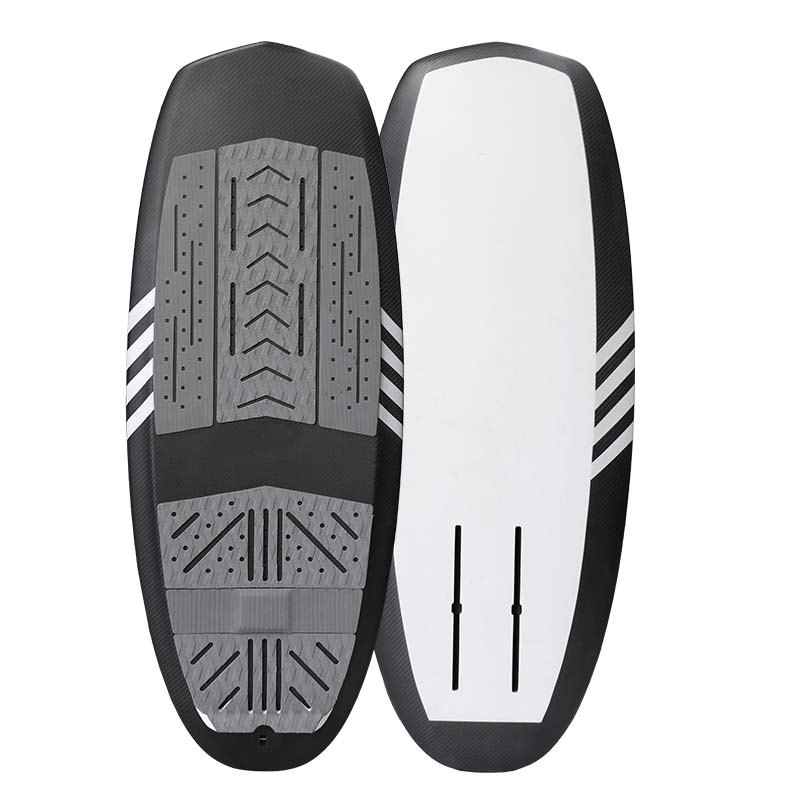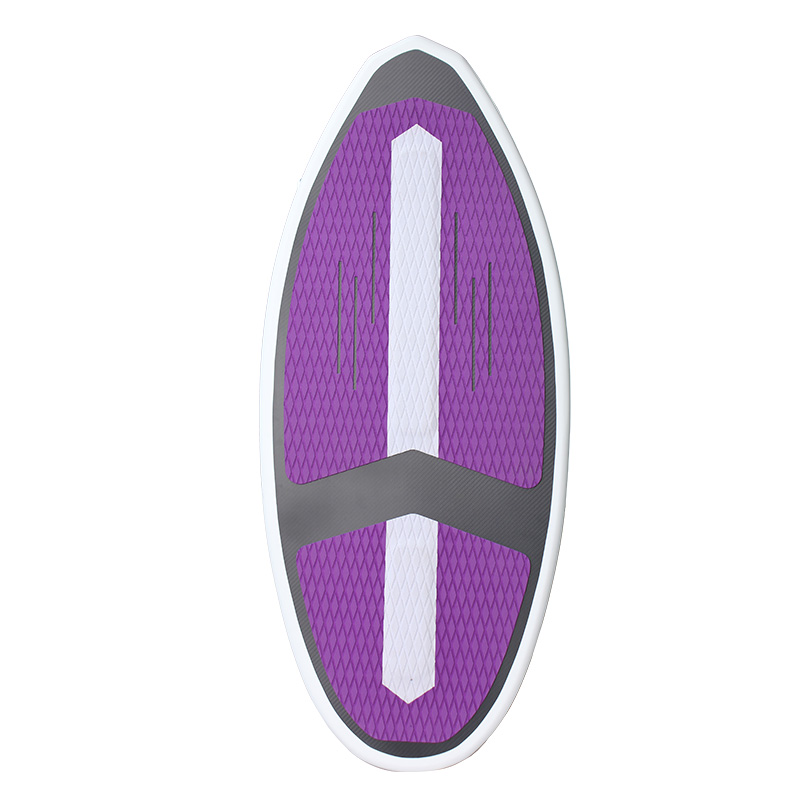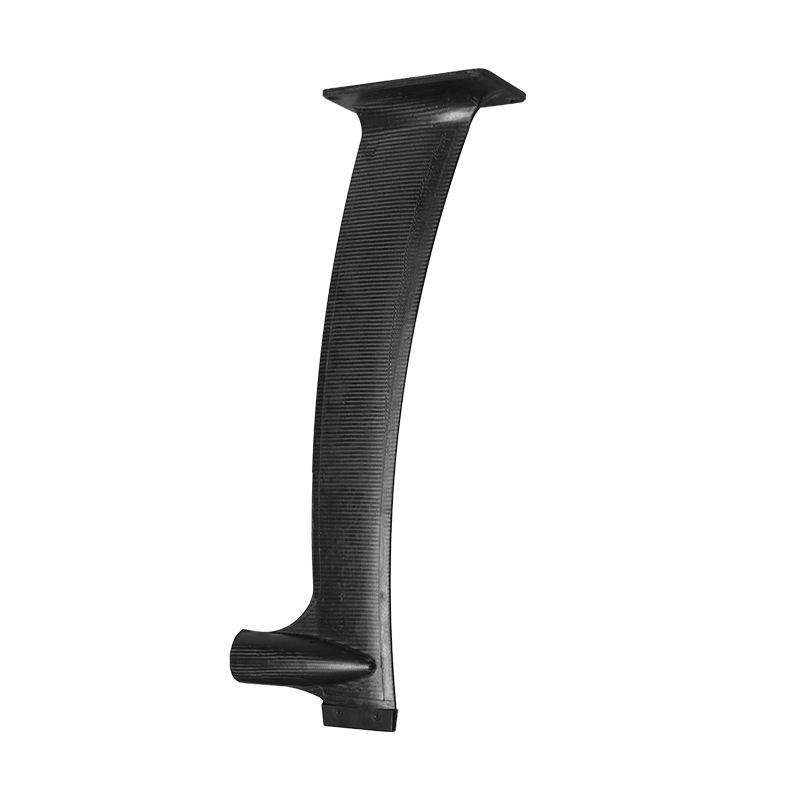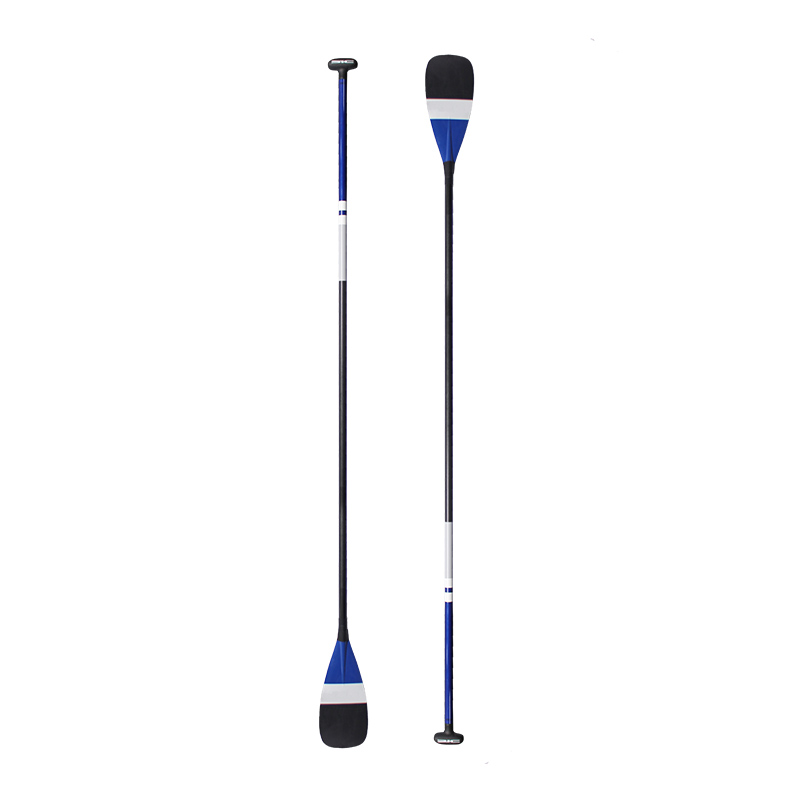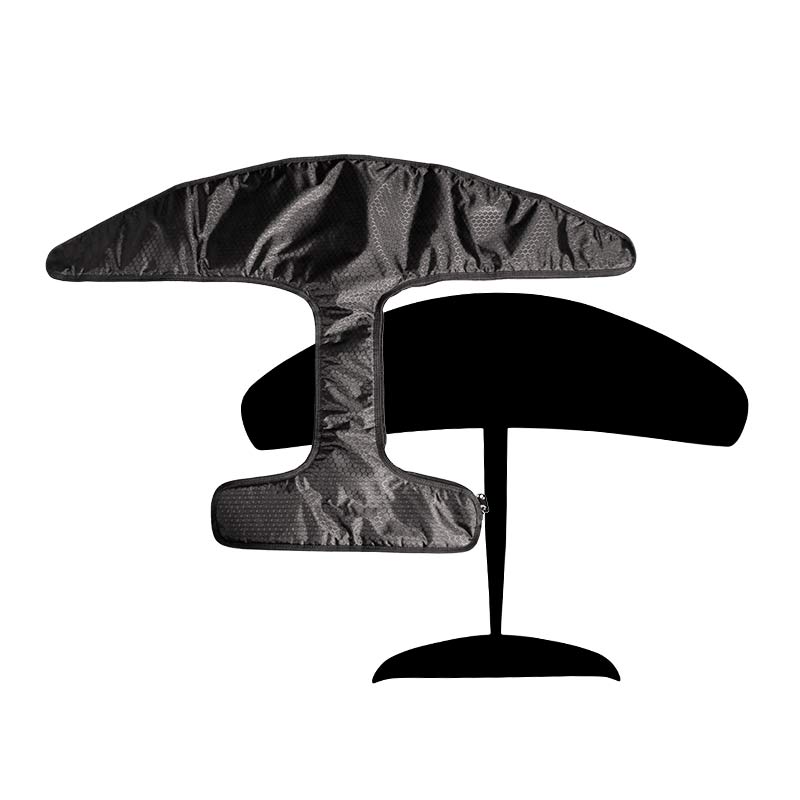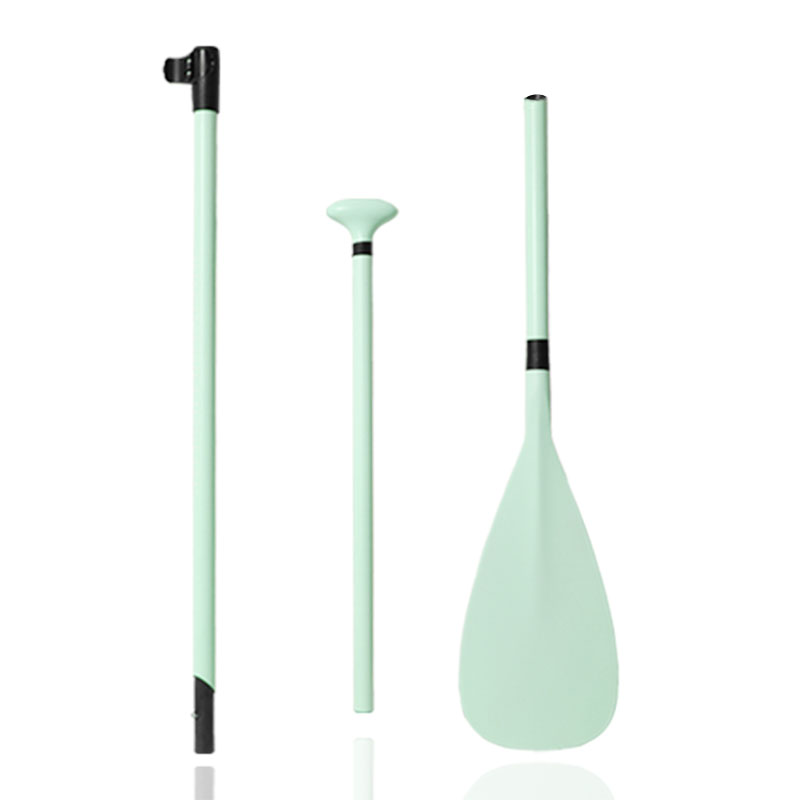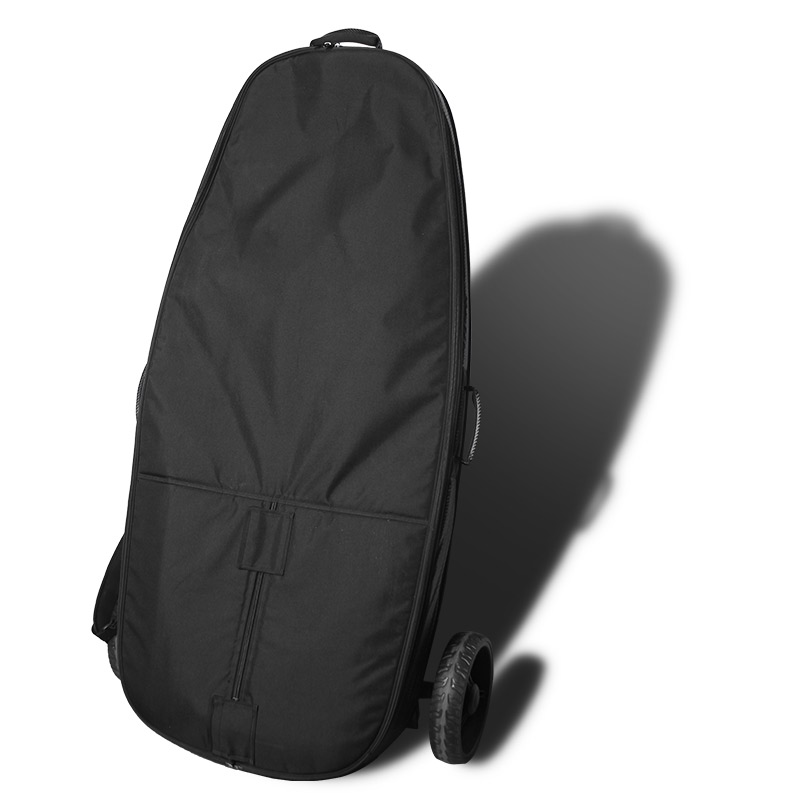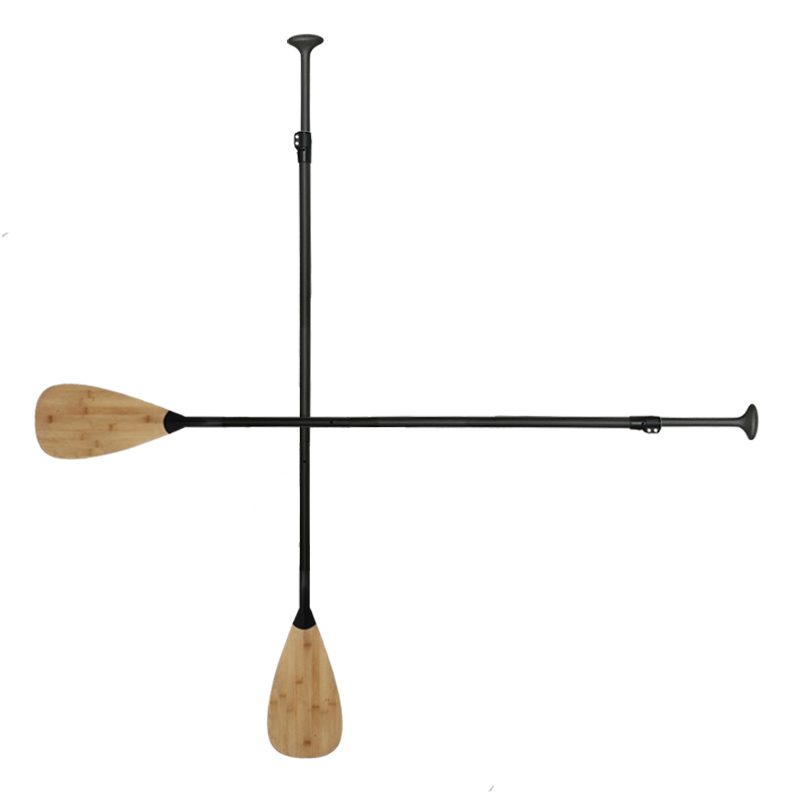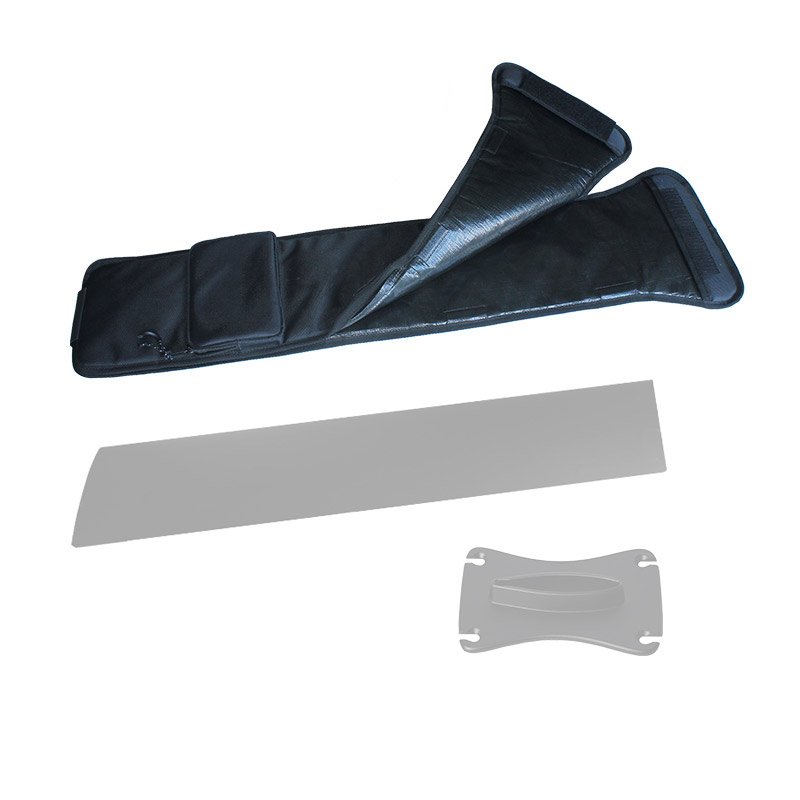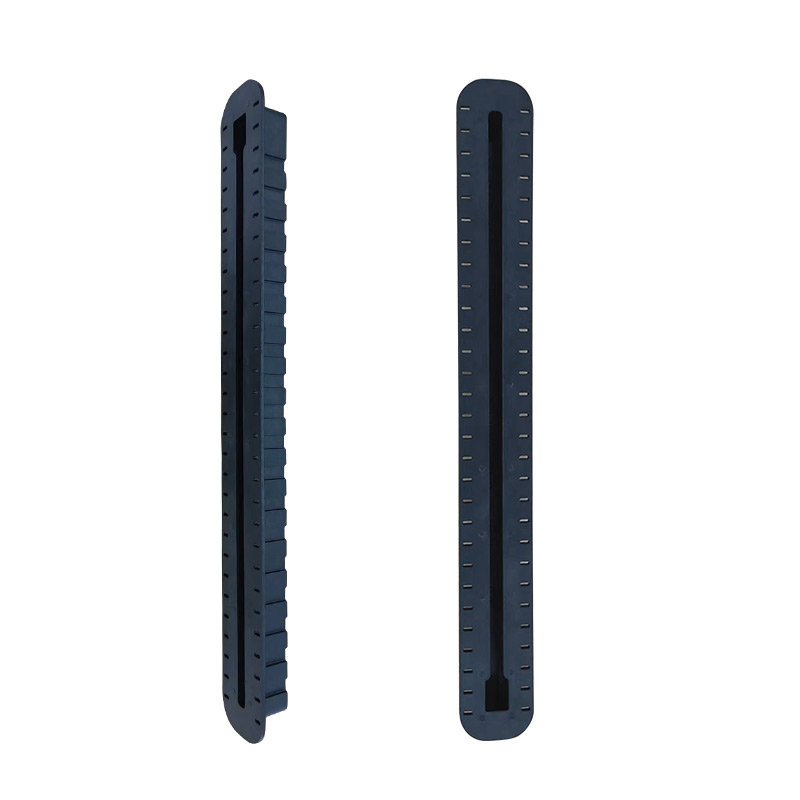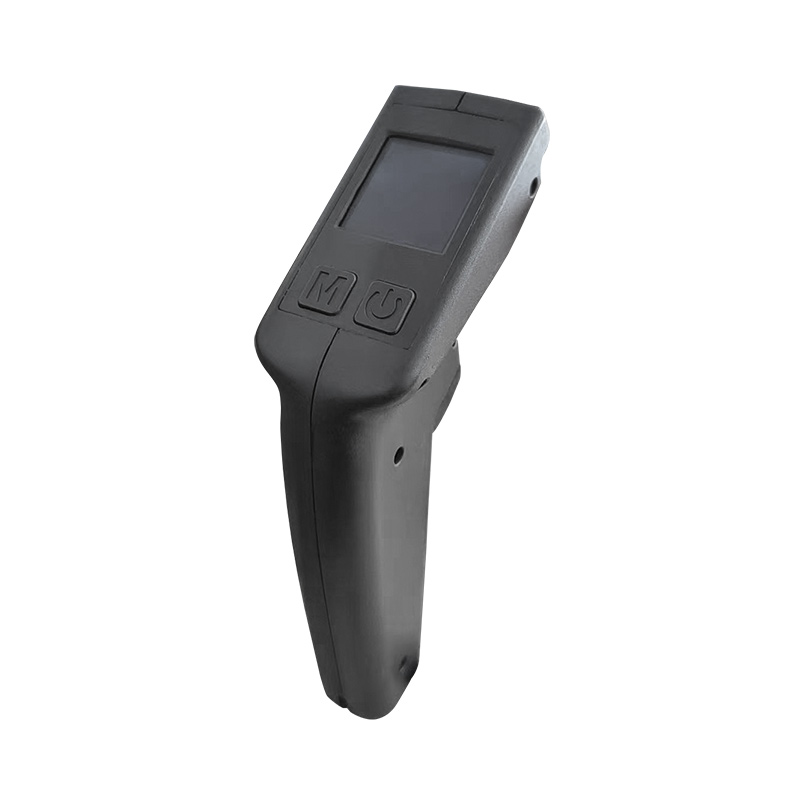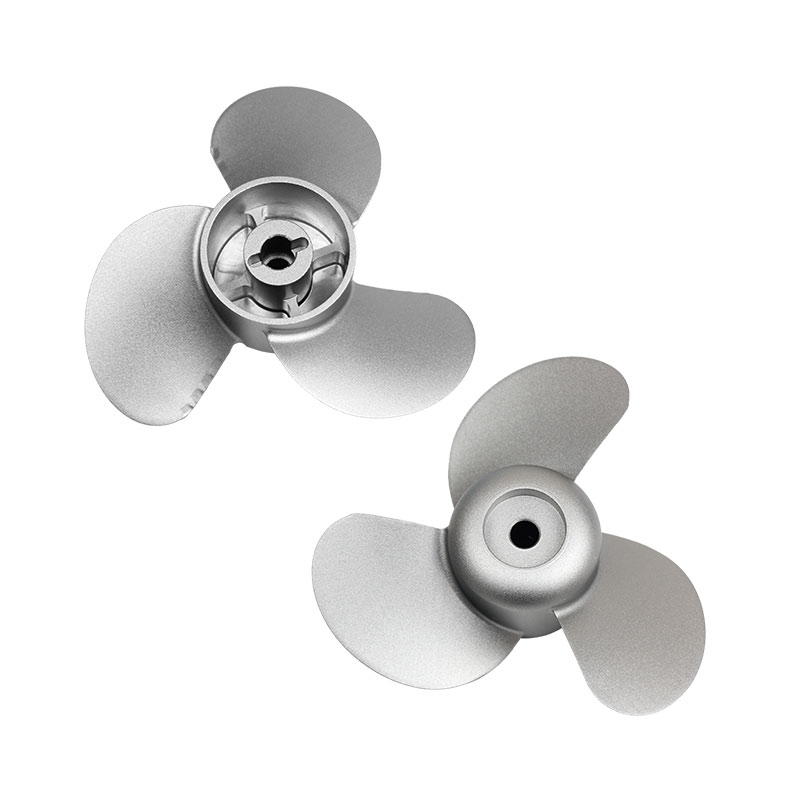The world of stand-up paddleboarding (SUP) offers a wide variety types of SUP boards designed to suit different water conditions, activities, and skill levels. Whether you’re gliding over calm lakes, riding massive waves, or casting a line in a quiet cove, there have different kinds of paddle boards for every pursuit. Understanding the unique features and advantages of each type of SUP board is essential for selecting the perfect one. This article explores seven popular types of SUP boards, including the All-Round SUP, Flatwater/Touring SUP, Racing SUP, Fishing SUP, Yoga SUP, Surfing SUP, and White-water SUP.
All-Round Types of SUP Boards
The All-Round SUP is the most versatile type of paddleboard, designed to provide a balance between stability and maneuverability. These boards are typically wider and thicker, making them stable enough for beginners yet responsive enough for more experienced paddlers. Ideal for calm waters, this board type can also handle light waves and gentle rivers. The All-Round SUP is perfect for those seeking a board that can adapt to various activities, from recreational paddling to fitness routines or even light touring.
For beginners, its stability makes it easier to learn the basics, while intermediate paddlers will appreciate its maneuverability in different conditions. The All-Round SUP is particularly effective for leisurely paddling, offering a smooth, enjoyable ride while still being agile enough for dynamic movements on the water.
The All-round types of SUP boards looks like
- The board shape has a wide and stable outline, often with a rounded nose and tail. This shape provides excellent balance and stability, making it ideal for beginners while still offering enough maneuverability for intermediate paddlers.
- All-Round Types of SUP Boards usually range between 10 to 12 feet in length, with widths ranging from 30 to 34 inches. This width gives the board a solid platform for standing and paddling, even in moderate waves or varying water conditions.
- These boards are typically thicker than specialized boards, often ranging from 4 to 6 inches thick, which helps with buoyancy and stability.
- The deck of an All-Round SUP board is often covered with a non-slip, textured pad for traction. This ensures a secure footing for paddlers during various activities like paddling, yoga, or light touring.

Flatwater/Touring SUP
The Flatwater/Touring Types of SUP Boards are designed for long-distance paddling across calm waters such as lakes, ponds, and slow-moving rivers. These boards are longer and narrower than the All-Round SUP, which allows for more efficient paddling and increased speed over longer distances. The sleek design cuts through the water effortlessly, making it ideal for those who enjoy touring or simply want to go further and faster without sacrificing comfort.
The Flatwater/Touring SUP is also well-suited for fitness enthusiasts who use the board to build endurance or explore large bodies of water. Its narrow shape and extended length offer a more streamlined experience, allowing paddlers to glide effortlessly while maintaining balance and stability.
Flatwater/Touring SUP Appearance
- The board has a sleek and streamlined shape, often featuring a pointed or slightly curved nose (bow) to cut through the water more efficiently. The tail is generally narrower compared to an All-Round SUP to enhance tracking and speed.
- Flatwater/Touring Types of SUP Boards are usually longer than All-Round SUP boards, typically ranging from 11 to 14 feet in length. The width is narrower, usually around 28 to 32 inches, offering less stability but more speed and glide, which is ideal for long-distance paddling.
- These boards tend to be thinner, usually between 4 to 6 inches thick. This provides a lower profile for better glide through the water while maintaining enough buoyancy to support the paddler.
- The deck of a Flatwater/Touring SUP board typically features a large, flat, non-slip pad for comfort during long paddles. Some models may include a bungee cord area for securing gear or supplies during extended trips.

Racing SUP
As the name suggests, the Racing Stand Up Board is specifically built for speed. These boards are long, narrow, and feature a sleek design to minimize drag and maximize speed. Ideal for competitive paddlers, the Racing SUP is engineered to allow for powerful, efficient strokes. Its pointed nose and streamlined shape are designed to glide through the water with minimal resistance, giving paddlers the competitive edge in races or time trials.
While not ideal for beginners, this board excels in open water races and events. Experienced paddlers will benefit from the board’s high-performance design, achieving maximum speed in favorable conditions. Whether for professional competition or personal performance challenges, the Racing SUP is built for those who seek to push the limits.
Racing Stand-up Paddleboard
- The board shape has a long, narrow, and streamlined shape, often with a sharply pointed nose (bow) to cut through the water with minimal resistance. The tail is similarly narrow and tapered, which helps with efficient glide and straight-line speed. This design minimizes drag and maximizes the board’s ability to maintain speed over long distances.
- The length of short-distance racing types of SUP boards are 12’6” and below, while the length of a long-distance racing SUP board is 14′. Both have a width of 24”-27”.
- The deck of a Racing SUP board features a non-slip surface for traction. It’s usually more minimalistic compared to other boards, designed to keep the weight down while still offering enough grip for paddlers during intense sprints.
- Many Racing SUP boards feature a single, longer fin to enhance tracking and prevent the board from veering off course. The nose often has a pronounced rocker (curvature) to allow for efficient movement through choppy waters, but it is less curved than boards designed for surfing or white-water conditions.
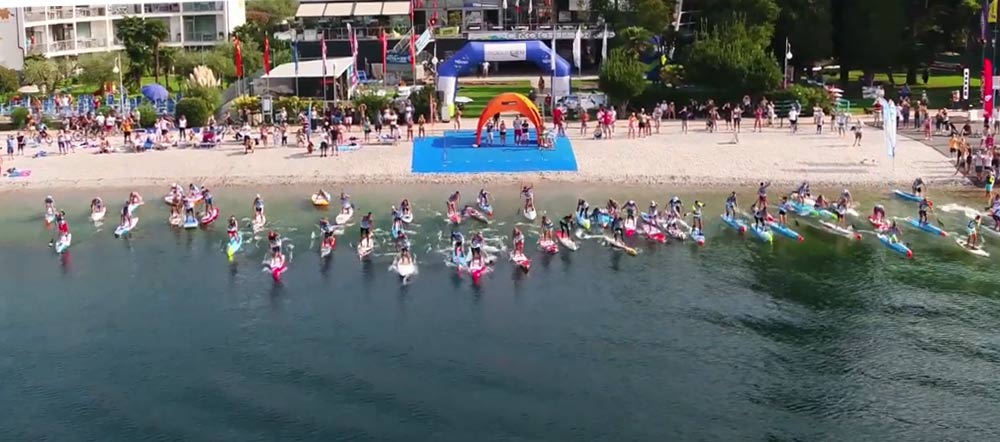
Fishing SUP
The Fishing types of SUP boards are designed with anglers in mind. Its larger, wider shape provides enhanced stability, making it easier to stand while casting or reeling in a catch. Some models even feature built-in storage compartments, rod holders, and additional accessories tailored for fishing needs. The design of the Fishing SUP ensures that it remains steady on the water, even in slightly rougher conditions, allowing for a smooth fishing experience.
For those who love the thrill of fishing from the water, the Fishing SUP provides an ideal platform. With ample space for gear and a stable design that allows for easy casting, it offers a more accessible way to fish on the water without the need for a boat.
Recognize The Fishing Stand Up Board
- The shape of the fishing types of boards are wide, flat, and stable, often with a slightly rounded nose and a flat or slightly tapered tail. This design enhances stability, making it easier for anglers to stand and fish without worrying about tipping. The wider shape also provides a solid base for carrying gear.
- Fishing types of SUP boards are usually longer than the All-Round SUP, typically ranging from 11 to 13 feet (3.4 to 4 meters) in length. The width is often around 32 to 36 inches, offering excellent stability for fishing activities. The extra width allows for comfortable movement while standing or casting. Meanwhile, these boards are generally thicker than performance-oriented boards, ranging from 5 to 6 inches. This added thickness provides more buoyancy, ensuring that the board can carry the weight of the angler and any fishing gear without compromising stability.
- Generally, the fishing types SUP boards are built with durable materials like high-density polyethylene (HDPE) or inflatable PVC, which offer strength and durability for handling gear and withstanding impacts. Many are designed with additional reinforcement to support extra weight, making them ideal for carrying fishing equipment.

Yoga SUP
The Yoga SUP board is specifically designed for those looking to combine paddleboarding with yoga. These boards are typically wider and more stable than the All-Round SUP, providing a solid platform for yoga practitioners to perform poses on the water. The increased surface area ensures that the board remains stable during even the most challenging poses, giving yogis the balance they need to stay grounded.
The Yoga SUP is perfect for those who want to combine their love of the water with mindfulness and fitness. Whether practicing meditation or performing sun salutations, the Yoga SUP offers a tranquil environment for deepening one’s yoga practice while floating on calm waters. Its stability and spaciousness create the ideal foundation for yoga enthusiasts.
Yoga Types of SUP Boards Appearance
- As the requirements of a fishing paddleboard, the balance is also very important for Yoga type paddleboard. The board features a wide and flat shape with a rounded or slightly square nose. This shape enhances stability, allowing for easy balance during yoga poses, even in calm or slightly choppy waters. The tail is usually wide and squared, providing more surface area for standing and movement.
- Typically they are longer than most other boards, usually ranging from 10’6″ to 12′ in length. The width tends to be around 30 to 34 inches, providing ample space for various yoga postures. The extra width ensures that the board remains stable during balancing poses or when transitioning between movements. A typical Yoga SUP board is 10’6″ in length, 33″ in width, and features a rounded nose.
- Meanwhile, the added thickness (around 4 to 6 inches) ensures sufficient buoyancy to keep the board afloat, even when a person is performing yoga poses or shifting their weight.
- Many Yoga SUP boards come with additional features in their design features, like bungee cords for securing personal items, a carry handle for easy transportation, and tie-downs for adding a yoga mat or other gear. Some boards also include a detachable seat or paddle holder for added convenience.

Surfing SUP
For those who want to take on waves, the Surfing SUP is the board of choice. Built to handle the rigors of surfing, these boards are typically shorter, lighter, and more maneuverable than the other types of SUP boards. The Surfing SUP features a more pronounced rocker, allowing paddlers to navigate waves with ease and perform quick turns. The shorter design helps surfers stay agile, catching waves and riding them with more precision.
Ideal for surf conditions, the Surfing SUP is the best option for paddlers who enjoy both paddling and surfing. It allows you to harness the power of the waves while still benefiting from the paddle for added propulsion.
Surf Types of SUP Boards Looks Like
- Surfing types of SUP boards are generally shorter than touring or racing boards, typically ranging from 8′ to 10′ in length. The width is typically between 28″ – 32″, providing a good balance between stability and agility. The reduced length and width make the board more responsive to wave movement, enabling sharp turns and faster rides. Meanwhile, these boards are usually thinner, around 4 to 5 inches thick, which allows for better wave penetration and reduced drag. The thinner profile ensures greater control while surfing but still provides enough buoyancy to keep the board afloat in smaller or moderate waves.
- The deck of a Surfing SUP board is often covered with a textured non-slip pad for optimal grip. This ensures that the paddler can stand securely while waiting for waves and maintain a stable position while paddling or riding the wave.
- The Surfing SUP board is often equipped with a single or multiple smaller fins for improved maneuverability and control in the surf. The fins help with tracking and turning while providing stability in the waves. Many boards also feature a carry handle for easier transport.

White-water SUP
The White-water types of paddle boards are designed for adventurers seeking thrills in fast-moving water. These boards are built to withstand the impacts and challenges of white-water rapids, offering stability and control in turbulent conditions. The White-water SUP typically features a reinforced, durable construction to absorb the shock of navigating through rocks, waves, and powerful currents.
Thrill-seekers who love navigating challenging white-water rivers will appreciate the performance of the White-water SUP. Its ability to stay stable and responsive in chaotic water makes it a vital tool for those looking to test their skills in a more extreme environment.
Know the Outlook of Whitewater Paddleboard
- The board has a short, compact, and wide shape, often with a rounded nose to help it deflect off rocks and obstacles in the river. The tail is generally squared or slightly tapered to offer quick turns and enhanced maneuverability in fast-moving water. The shape allows for better stability and the ability to quickly navigate through rapids.
- White-water types of SUP boards are typically shorter than other SUP types, usually ranging from 7′ to 9′ in length. The width tends to be wider, around 30″ to 34″, to provide extra stability when paddling through turbulent water. The added width ensures that the board remains upright and balanced during rapid currents and while negotiating obstacles like rocks.
- These boards are usually thicker than regular surf or touring boards, typically around 5 to 6 inches thick, offering buoyancy and strength. The extra thickness ensures that the board remains afloat, even when it’s subjected to powerful waves or intense currents.
- The deck of a White-water SUP board is covered with a thick, textured non-slip pad, ensuring that the paddler has a solid grip during intense paddling sessions. The pad is often extended to cover the full length of the board for maximum comfort and traction.
- Many White-water SUP boards come with extra features like reinforced rails, grab handles, and bungee storage areas for securing gear. Some boards also include multiple fins, or even no fins at all, to prevent getting caught on rocks. The fins, if present, are often smaller and removable for easy customization.

The 5 major related water sports organizations
- ISA, International Surfing Association
- ICF, International Canoe Federation
- ACA, American Canoe Association
- HKCU, Hong Kong Canoe Union
- AST, ASIA SUP Tour
Conclusion
Each type of SUP board is crafted to meet the specific needs of paddlers, from recreational use to competitive racing. The All-Round SUP, Flatwater/Touring SUP, Racing SUP, Fishing SUP, Yoga SUP, Surfing SUP, and White-water SUP each offer unique characteristics suited for different activities and environments. Selecting the right board ensures a tailored experience that maximizes enjoyment, performance, and safety. Whether you’re seeking tranquility on calm waters or the adrenaline rush of rapids, there’s a SUP board designed to suit every water enthusiast.
If you need custom different types of SUP board paddles, welcome to contact us for more details.



